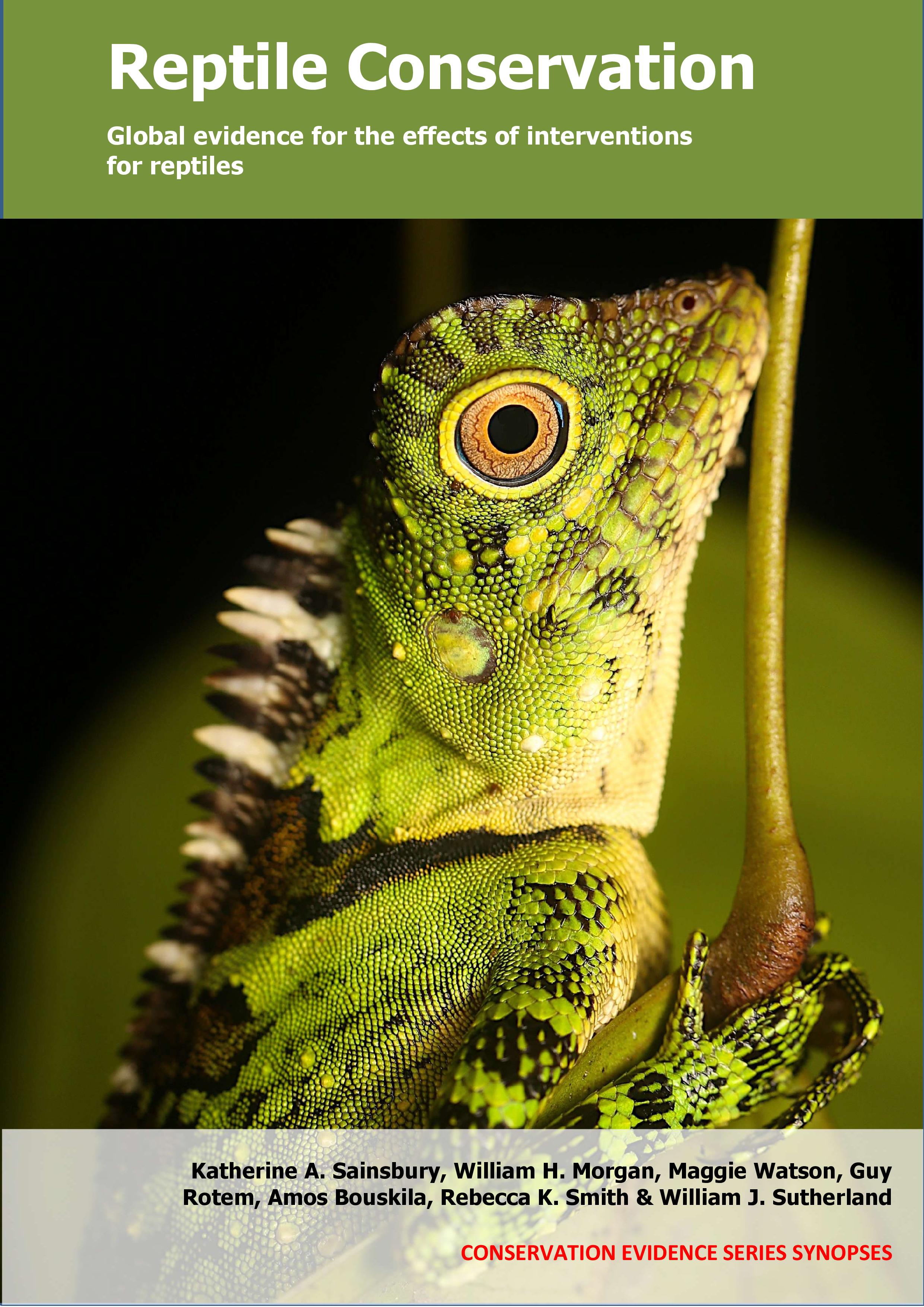Modify grazing regime: Grassland & shrubland
-
Overall effectiveness category Awaiting assessment
-
Number of studies: 4
View assessment score
Hide assessment score
How is the evidence assessed?
-
Effectiveness
not assessed -
Certainty
not assessed -
Harms
not assessed
Study locations
Supporting evidence from individual studies
A replicated, site comparison study in 1978–1979 in grass and scrubland in western Arizona, USA (Jones 2018) found that overall lizard abundance but not diversity was higher under lighter grazing regimes in four of five vegetation types compared to heavier grazing. Lighter grazed plots had higher abundances of lizards compared to heavier grazing in chaparral (light: 1.7 individuals/trap group/night; heavy: 1.2), desert grassland (light: 0.8; heavy: 0.6), mixed riparian scrub (light: 1.2; heavy: 0.7) and cottonwood-willow (light: 1.1; heavy: 0.6). Relative abundances were similar in Sonoran desertscrub regardless of grazing regime (light: 1.0; heavy: 1.1). Species diversity was statistically similar between lightly and heavily grazed sites across all vegetation sites (reported as Shannon-Weaver diversity index). See paper for details of results for individual species. Seven lightly grazed and seven heavily grazed plots were established in five different vegetation communities: chaparral, desert grassland, mixed riparian scrub, riparian cottonwood-willow and Sonoran desertscrub (70 total plots). Lightly grazed sites were characterised by a lack of livestock and good habitat condition. Heavily grazed sites were characterised by existence of cattle trails, presence of livestock and poor habitat condition. Abundance and diversity were estimated using drift fences with four pitfall traps in March–June and September–November 1978 and March–October 1979.
Study and other actions testedA site comparison study in 1998–2001 in an area of thornscrub in southern Texas, USA (Hellgren et al. 2010) found Texas horned lizard Phrynosoma cornutum survival was higher under moderate grazing than heavy grazing, but highest in ungrazed sites. Survival of Texas horned lizards over four-months periods was higher in moderately-grazed sites (54%) than in heavily-grazed sites (33%) but lower than in ungrazed sites (77%). Lizard survival was monitored in a wildlife management area (6,500 ha) in three sites (50–60 ha), each with a different grazing regime: the ungrazed site had not been grazed since 1976, the moderately-grazed site was stocked at 30–50 steers/ha/day and the heavily-grazed site had 75–100 steers/ha/day. Lizards were captured by searching roads, chance encounters and drift fences with pitfall traps. Lizards were marked with a PIT tag and toe clips and fitted with a radio transmitter (ungrazed: 20 lizards, moderately grazed: 43 lizards, heavily grazed: 44 lizards). Lizards were located at least once every 24 hours for four months from mid-April to mid-August in 1998–2001.
Study and other actions testedA replicated, paired sites, site comparison study in 1993–1996 and 2007 in chenopod scrubland in South Australia, Australia (Read & Cunningham 2010) found overall reptile species richness and abundances did not show a clear response to different grazing intensities. Overall reptile species richness was 9 species/site in light and medium grazing sites and 10 species/site in heavy grazing sites (numbers taken from figure 6). Of 38 species recorded, no individual species or species group (agamid lizards, skinks, geckos) abundances changed in response to different grazing intensities alone (results reported as model outputs, see paper for other factors affecting individual abundances). However, gecko capture rates may have been lower in light grazing sites (8 individuals/site) compared to medium grazing (13 individuals/site), but similar to heavy grazing (8 individuals/site; number taken from figure 6). Four paired sites of differing grazing pressure were set out in 1993 (low intensity grazing: <12 cattle dung/ha; medium: 12–100; high: >120). Reptiles were sampled for 10 days in summer from 1993–1996 and again in 2007 using 300 mm long flymesh drift fences with 13 unbaited pitfall traps (500 mm deep x 150 mm wide, 8 m apart).
Study and other actions testedA replicated, controlled, before-and-after study in 2011–2012 in four riparian grasslands in Missouri, USA (Larson 2014) found that light grazing resulted in lower reptile species richness compared to heavy grazing after prescribed burning, but similar richness compared to ungrazed areas. The effects of heavy grazing and burning cannot be separated and all results reported as statistical model outputs. Reptile species richness was slightly lower in lightly grazed plots and ungrazed plots compared to heavily grazed and burned plots. Turtle presence was associated with taller grass heights linked with light grazing, lizards were associated with burned and heavily grazed plots, and snakes were associated with 70–100% grass cover habitat that occurred the year following burning. Patches of four watersheds (10–54 ha) were treated with light grazing (May–July 2011 or 2012), burning followed by heavy grazing (May–July after April burning in 2011 or 2012), or unmanaged during the preceding five years. Reptile monitoring took place 2–3 times/month in March–May 2011–2012 using coverboards and visual encounter surveys.
Study and other actions tested
Where has this evidence come from?
List of journals searched by synopsis
All the journals searched for all synopses
This Action forms part of the Action Synopsis:
Reptile Conservation
Reptile Conservation - Published 2021
Reptile synopsis





)_2023.JPG)














